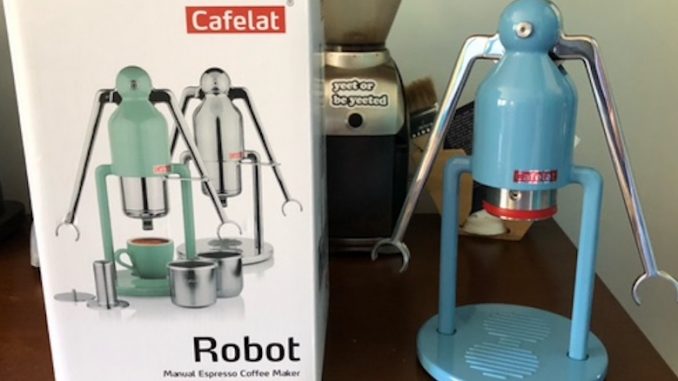
The Cafelat Robot is a hand-crank espresso maker that adds some serious pressure to your home coffee setup.
BY KATRINA YENTCH
BARISTA MAGAZINE ONLINE
Photos courtesy of Katrina Yentch
I’ll admit, I’m pretty strictly a manual coffee brewer. If you read the ramble on my morning coffee routine while Test Driving the Hario Drip Assist, you probably recognize how crucial it is to me to start my workday with a black coffee, beaming with notes of berries and balanced acidity. However, I completely recognize and respect the magic of the morning almond latte, and even more so the work that goes into the espresso shot behind it. That being said, the Cafelat Robot has been a pleasant surprise for me to experience despite my usual run for the pourover cone.
The folks at Prima Coffee Equipment have seriously expanded their inventory since I first familiarized myself with the company several years ago. It’s exciting to see all of the home brewing gear they’ve added over the past year. Since I’ve been away from the bar for about three years now, I’ve been intimidated to step into the world of home espresso brewing.
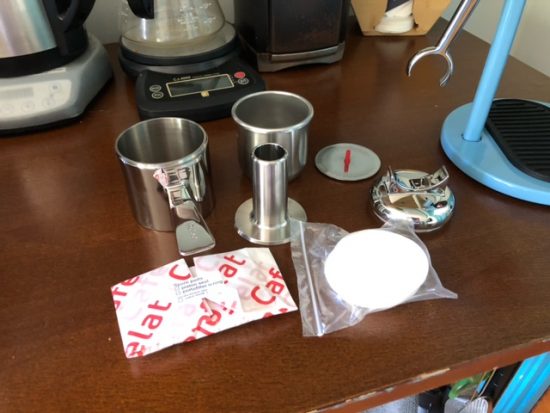
They recently sent me the Cafelat Robot, which the SCA Boston convention named the best new product of 2019 for the non-electrical consumer equipment category. Prima now carries it as one of three different hand-lever-type espresso makers on their roster, which includes the much-hyped and competitor brewer the Flair Espresso line.
What is the Cafelat Robot?
The Cafelat Robot is a lever-style home espresso maker. By pushing down on levers, home brewers build up pressure inside the portafilter, dispersion screen, and basket. The idea is that you’re creating pressure manually to develop that unique flavor profile that is so specific to espresso.
You can also develop a noticeable crema with this machine, although it’s not guaranteed depending on the kind of coffee you’re using. However, as we’ve seen with the development of pressure profiling over the last several years, espresso can be brewed with plenty of varying amounts of pressure.
How to use the Cafelat Robot
It’s a very straightforward process to brew espresso with the Cafelat, especially if you’ve ever worked as a barista. Simply place 18-25 grams of espresso in the included basket, press with the tamper, and place the dispersion screen on top of it. There are punctured holes on the bottom of the basket, but the dispersion screen on top is for water. Then, pour the desired water amount onto the basket.
Using a 2:1 ratio, I paired 18 grams of coffee with 75 grams of water to account for the amount of water that the coffee would absorb. After securing the basket with the portafilter into the “grouphead” of the Cafelat Robot, apply pressure by pulling downwards with the two handles. Spread this out over 45 seconds to 1 minute, and voila! Espresso achieved.
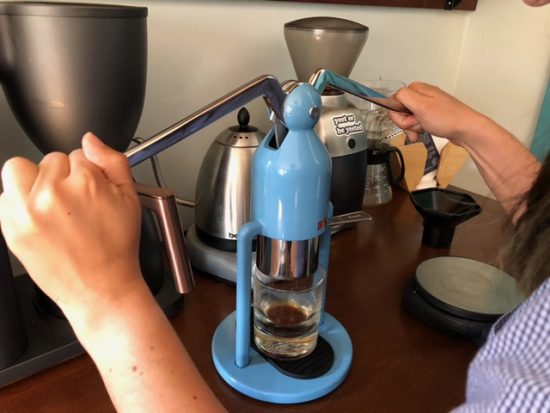
Initial impressions
Retailing at $400, the Cafelat Robot is not only a sturdy piece of coffee equipment itself, but also comes with very heavy durable pieces. It can be disappointing to get an item that comes with a plastic tamper, or thin and bendable stainless steel. So, for the price, it definitely holds up in quality of materials.
As a somewhat portable espresso maker, it’s also a great size. One thing that both home and commercial espresso brewers value is the amount of counter space they get to keep with their coffee equipment. So, it’s compact enough to live on a table with other items, yet light enough to move easily if needed. Also, it’s just plain cute. The Cafelat “Robot” is easily the most adorable coffee robot I’ve ever encountered, for its pastel color options and narrow frame make it a neat retro-looking item to have around the brewing station.
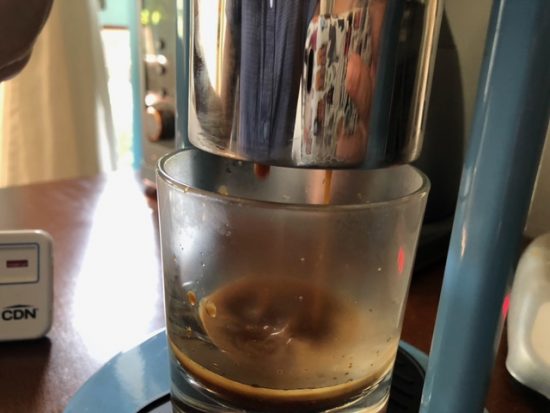
The taste
The taste of the coffee that the Cafelat Robot brewed was admittedly awesome. However, it may be a little difficult to gauge a dial-in if you don’t have much experience creating one for espresso. I had to fiddle around with grind size a bit in order to achieve something fine enough for espresso, but once I got there it was pretty instantaneous to get a good shot.
As a side note, for those who do want to get nerdy and pressure profile, the next level up for the Cafelat Robot is the barista version, which comes with a pressure gauge attached to the machine.
The crema wasn’t heavily present, but I’m also learning with the “myth debunking” of espresso that it isn’t necessarily possible nor desirable for medium- and light-roast coffees. I worked with a washed process single-origin Ethiopian coffee, which resulted in an intensely floral and lemonade-type shot of espresso.
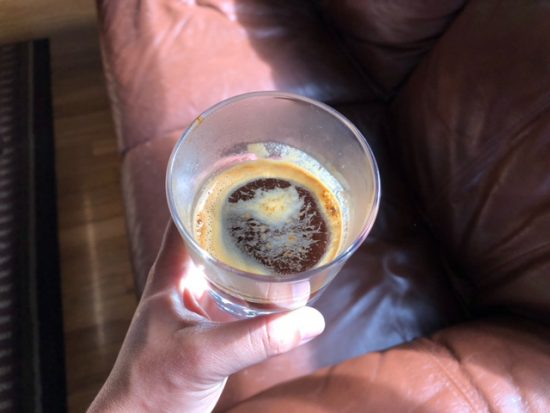
Some quirks of the Cafelat Robot
Heat your parts. Since the machine obviously doesn’t have hot water and steam running through it constantly, you should try to heat parts of it before brewing. I did this by leaving the portafilter in hot water while I was preparing the other items. If you have some leftover coffee you don’t plan on drinking, you can also pull a “test shot” to get some heat running through the machine—similar to how you would run a cycle of hot water on a commercial espresso machine before brewing.
Have small glassware. With a compact machine comes smaller surface area. You can’t stick your mug underneath the machine, or coffee and food scales bigger than the size of a hand. I used the smallest whiskey glass to make it work, but the machine seems to be intended for actual demitasse cups.
The portafilter unlocks in the middle. It proved to be a little irritating to twist the portafilter out of the machine in between uses. Sometimes the basket will stay glued to the machine but the rest of the portafilter comes out. You will likely be fiddling to find that sweet spot of unlocking it. It locks into either side of the grouphead, though.
Who should use this?
For folks who exclusively drink espresso or milk beverages, they may be better off spending the extra dough on something more convenient and practical for both espresso and milk frothing. However, for those of us who appreciate an espresso occasionally, the Cafelat Robot would be a great middle ground for its price compared to a semi-automatic.
Tune in next week, where we’ll feature an appropriate accessory to this item, the Bellman Stovetop Steamer.

